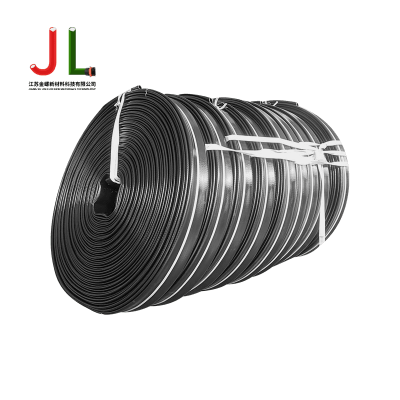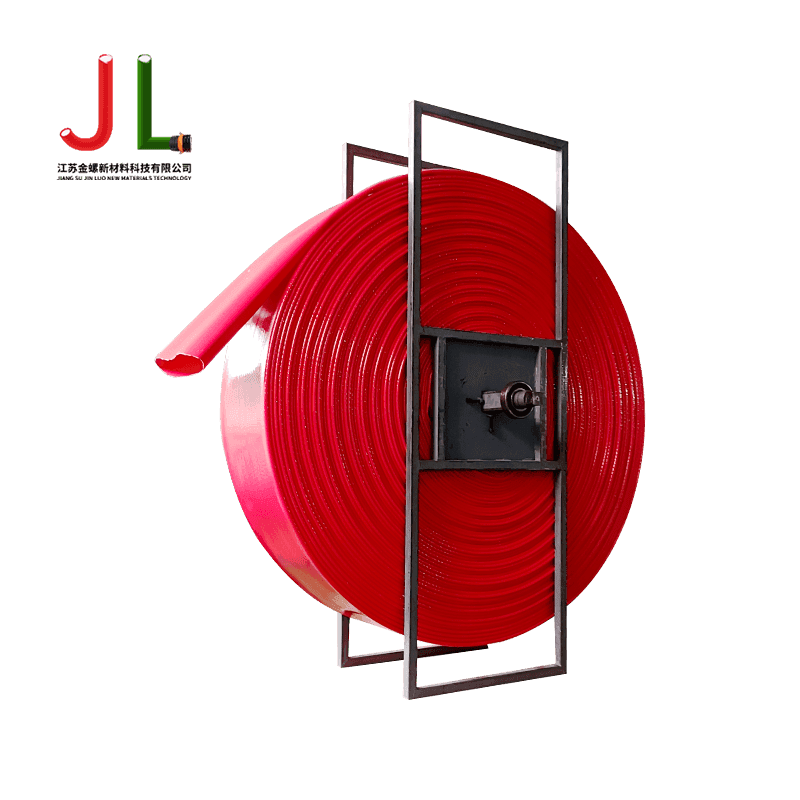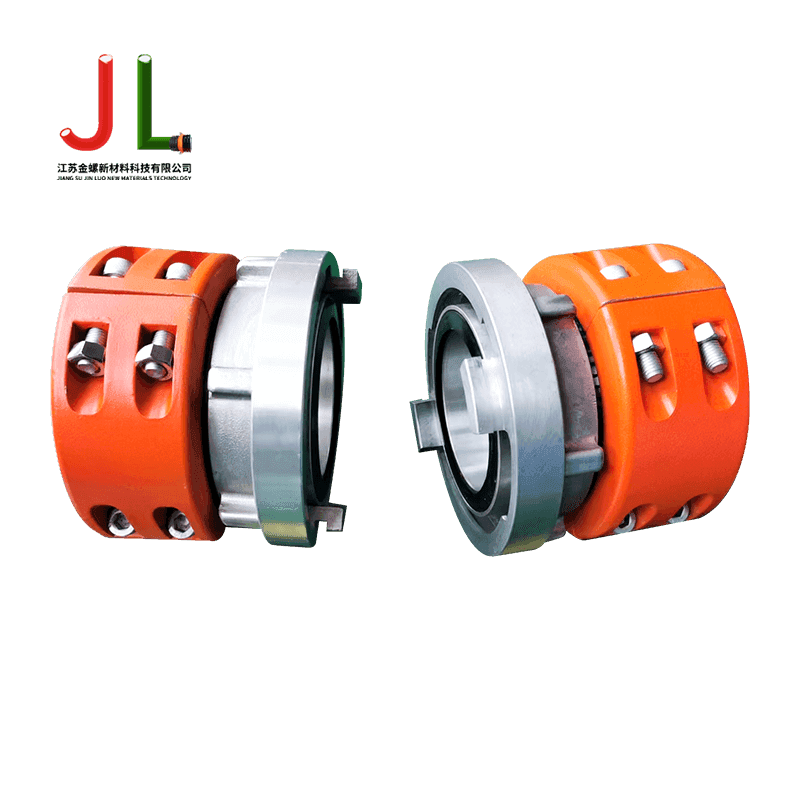The Ultimate Guide to TPU Layflat Hoses: Selection, Uses, and Benefits
5 Key Applications of TPU Layflat Hose for Industrial Use
Thermoplastic Polyurethane (TPU) layflat hoses have become indispensable in various industrial settings due to their durability, flexibility, and resistance to abrasion. These hoses are particularly valuable in applications where space is limited and quick deployment is essential.
Mining and Construction Applications
The mining industry extensively uses TPU layflat hose for industrial use because of its ability to withstand harsh conditions. These hoses are perfect for:
- Dewatering operations in underground mines
- Slurry transportation in mineral processing
- Dust suppression systems on construction sites
- Water supply for drilling operations
Compared to traditional rubber hoses, TPU layflat hoses offer superior performance in these applications. They are lighter yet more durable, with better resistance to chemicals commonly found in mining operations.
Agricultural Irrigation Systems
Modern farming operations benefit greatly from TPU layflat hoses for several reasons:
- They lay completely flat when not in use, saving storage space
- Quick deployment saves valuable time during critical irrigation periods
- Excellent UV resistance ensures long service life in outdoor conditions
The flexibility of these hoses allows them to conform to uneven terrain without kinking, ensuring consistent water flow to crops.
How to Choose the Best High-Pressure TPU Layflat Hose for Your Needs
Selecting the right high-pressure TPU layflat hose requires careful consideration of several factors to ensure optimal performance and longevity.
Pressure Requirements
The working pressure of your application is the most critical factor when selecting a high-pressure TPU layflat hose. Consider both the normal operating pressure and potential pressure spikes in your system. Below is a comparison of common pressure ratings:
| Pressure Rating | Recommended Use | Wall Thickness |
|---|---|---|
| 150 PSI | Light irrigation, general water transfer | 2-3 mm |
| 250 PSI | Industrial dewatering, firefighting | 3-4 mm |
| 350+ PSI | High-pressure washing, hydraulic systems | 4-6 mm |
Diameter Considerations
The inner diameter of your hose significantly affects flow rate and pressure loss. Larger diameters allow greater flow but may be more difficult to handle. Consider these factors:
- Required flow rate (GPM or L/min)
- Length of the hose run (longer runs may require larger diameters)
- Pump capacity and power
- Available storage space when not in use
Flexible TPU Water Discharge Hose vs. Traditional Alternatives
The emergence of TPU as a material for water discharge hoses has revolutionized many industries. Let's examine how it compares to traditional options.
Comparison with PVC Hoses
While PVC hoses have been widely used, flexible TPU water discharge hose offers distinct advantages:
- Better flexibility in cold temperatures (TPU remains flexible down to -40°F/-40°C)
- Superior abrasion resistance (3-5 times more resistant than PVC)
- Higher pressure ratings for equivalent wall thickness
- Longer service life (typically 2-3 times longer than PVC)
Comparison with Rubber Hoses
Rubber hoses have traditionally been the go-to for heavy-duty applications, but TPU offers several improvements:
| Characteristic | Rubber Hose | TPU Hose |
|---|---|---|
| Weight | Heavy | Light (about 30-40% lighter) |
| Flexibility | Good | Excellent |
| Chemical Resistance | Varies | Excellent against oils and many chemicals |
Essential Features of Durable TPU Layflat Irrigation Hose
Modern irrigation systems demand hoses that can withstand constant use and challenging environmental conditions. A durable TPU layflat irrigation hose incorporates several key features.
Material Composition
The quality of TPU used significantly impacts the hose's performance. Look for these material characteristics:
- High-grade TPU with UV stabilizers for outdoor use
- Reinforcement layers (typically polyester or aramid fibers) for strength
- Food-grade formulations for agricultural use (where applicable)
- Anti-microbial treatments for applications involving standing water
Design Features
Beyond the material itself, several design elements contribute to durability:
- Seamless construction to prevent weak points
- Precision-engineered inner surface to minimize friction loss
- Color options for different applications (blue for potable water, etc.)
- Crush-resistant designs for heavy equipment crossing
Why Lightweight TPU Layflat Fire Hose is Revolutionizing Firefighting
The firefighting industry has embraced TPU technology for its layflat hoses, resulting in significant operational improvements.
Operational Advantages
Lightweight TPU layflat fire hose offers several benefits to firefighting teams:
- Reduced physical strain on firefighters due to lighter weight
- Faster deployment in emergency situations
- Improved maneuverability in confined spaces
- Better resistance to abrasion from rough surfaces
Performance Characteristics
Modern TPU fire hoses meet or exceed traditional requirements while adding new capabilities:
| Parameter | Traditional Fire Hose | TPU Fire Hose |
|---|---|---|
| Weight per 100ft | 45-60 lbs | 25-35 lbs |
| Deployment Time | 30-45 seconds | 15-25 seconds |
| Freeze Recovery | Poor | Excellent (remains flexible) |
Maintenance Tips for Long-Lasting TPU Layflat Hoses
Proper care and maintenance can significantly extend the service life of your TPU layflat hoses.
Cleaning Procedures
Regular cleaning prevents buildup and maintains hose performance:
- Flush with clean water after each use
- For chemical applications, use appropriate neutralizing solutions
- Remove all water before storage to prevent microbial growth
- Inspect for debris in the hose interior
Storage Recommendations
Proper storage is crucial for maintaining hose integrity:
- Store fully extended when possible, or loosely coiled
- Keep away from direct sunlight when not in use
- Avoid sharp bends or kinks during storage
- Store in a cool, dry environment



 English
English عربى
عربى 中文
中文













